L Peter Deutsch
description: Free software programmer and creator of Ghostscript
8 results

Coders at Work
by
Peter Seibel
Published 22 Jun 2009
Seibel: And then you win your “Dad the Determined Debugger” award. Ingalls: Exactly; right. The other thing is, the more you can reflect the satisfaction from progress back out to all the people who have dealt with you during that time, at least they have a sense that Daddy's doing something good, and we'll all be happy when it's done. L Peter Deutsch A prodigy, L Peter Deutsch started programming in the late '50s, at age 11, when his father brought home a memo about the programming of design calculations for the Cambridge Electron Accelerator at Harvard. He was soon hanging out at MIT, implementing Lisp on a PDP-1, and hacking on and improving code written by MIT hackers nearly twice his age.
…
For Amelia Contents About the Author Acknowledgments Introduction Chapter 1: Jamie Zawinski Chapter 2: Brad Fitzpatrick Chapter 3: Douglas Crockford Chapter 4: Brendan Eich Chapter 5: Joshua Bloch Chapter 6: Joe Armstrong Chapter 7: Simon Peyton Jones Chapter 8: Peter Norvig Chapter 9: Guy Steele Chapter 10: Dan Ingalls Chapter 11: L Peter Deutsch Chapter 12: Ken Thompson Chapter 13: Fran Allen Chapter 14: Bernie Cosell Chapter 15: Donald Knuth Appendix A: Bibliography Index About the Author Peter Seibel is either a writer turned programmer or programmer turned writer. After picking up an undergraduate degree in English and working briefly as a journalist, he was seduced by the web.
…
Zach Beane, Luke Gorrie, Dave Walden and my mom also all read chapters and provided well-timed encouragement. Zach additionally—as is now traditional with my books—provided some words to go on the cover; this time the book's subtitle. Alan Kay made the excellent suggestion to include Dan Ingalls and L Peter Deutsch. Scott Fahlman gave me some useful background on Jamie Zawinski's early career and Dave Walden sent historical materials on Bolt Beranek and Newman to help me prepare for my interview with Bernie Cosell. To anyone I have forgotten, you still have my thanks and also my apologies. Thanks to the folks at Apress, especially Gary Cornell who first suggested I do this book, John Vacca and Michael Banks for their suggestions, and my copy editor Candace English who fixed innumerable errors.

Dreaming in Code: Two Dozen Programmers, Three Years, 4,732 Bugs, and One Quest for Transcendent Software
by
Scott Rosenberg
Published 2 Jan 2006
If you report a bug to a programmer, the first thing she will do is ask, “Have you duplicated the problem?”—meaning, can you reliably make it happen again? If the answer is yes, that’s more than half the battle. If it is no, most of the time the programmer will simply shrug her shoulders and write it off to faulty hardware or cosmic rays. “‘Software engineering’ is something of an oxymoron,” L. Peter Deutsch, a software veteran who worked at the fabled Xerox Palo Alto Research Center in the seventies and eighties, has said. “It’s very difficult to have real engineering before you have physics, and there isn’t anything even close to a physics for software.” Students of other kinds of science are sometimes said to have “physics envy,” since, as computing pioneer Alan Kay has put it, physicists “deal with the absolute foundations of the universe, and they do it with serious math.”
…
For the etymology of engineering, see http://en.wikipedia.org/wiki/Engineering #Etymology and Webster’s New World Dictionary (Simon & Schuster, 1984), p. 463. “A Software Engineer, a Hardware Engineer”: This joke is found in many locations online; for example: http://www.eff.org/Net_culture/Folklore/Humor/ engineer.joke. “‘Software engineering’ is something”: L. Peter Deutsch, January 1999 ACM Fellow profile, at http://www.acm.org/sigsoft/SEN/deutsch.htm. physicists “deal with the absolute foundations”: Alan Kay, Turing Award lecture at OOPSLA Conference, October 2004. Video is available at http://www.acm.org/talks/AlanKay/KayTuring.htm. “Hopper believed that programming”: From her official biography page at http://www.hopper.navy.mil/grace/grace.htm.

Dealers of Lightning
by
Michael A. Hiltzik
Published 27 Apr 2000
David R. Boggs lives in northern California, where he designs and markets a new generation of networking circuit boards. John Seely Brown is chief scientist of Xerox and director of PARC. Lynn A. Conway is professor of electrical engineering and computer science at the University of Michigan. L. Peter Deutsch lives in northern California, where he develops and markets a version of GhostScript, a page description language related to PostScript. William Duvall, who lives in Idaho, invented Surfwatch, a program to prevent children from inadvertently encountering objectionable websites while surfing the Internet.
…
Finally several consented to read drafts of portions of this book to correct stray errors, misconceptions, and injustices. Any that remain are my own. For their time and recollections I would like to thank William Atkinson, Robert Belleville, David K. Biegelson, Daniel G. Bobrow, David R. Boggs, John Seely Brown, Stuart K. Card, Wesley A. Clark, Lynn Conway, Rigdon Currie, L. Peter Deutsch, Bill Duvall, Jerome I. Elkind, John Ellenby, William English, Douglas Fairbairn, Edward R. Fiala, Charles M. Geschke, Adele Goldberg, Marian Goldeen, Jacob E. Goldman, Laura Gould, William F. Gunning, Harold H. Hall, Daniel H. Ingalls, Charles Irby, Chris Jeffers, Richard E. Jones, Ted Kaehler, Alan C.
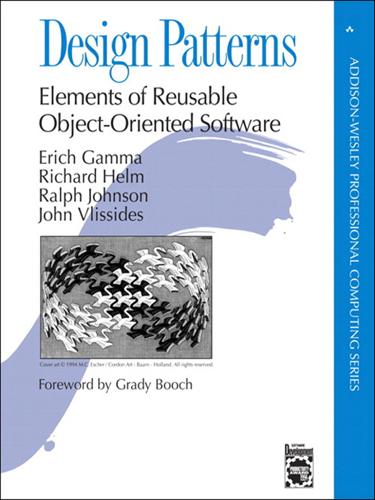
Design Patterns: Elements of Reusable Object-Oriented Software (Joanne Romanovich's Library)
by
Erich Gamma
,
Richard Helm
,
Ralph Johnson
and
John Vlissides
Published 18 Jul 1995
Bigger-staff and Alan J. Perlis, editors, Software Reusability, Volume II: Applications and Experience, pages 269-287. Addison-Wesley, Reading, MA, 1989. [dCLF93] Dennis de Champeaux, Doug Lea, and Penelope Faure. Object-Oriented System Development. Addison-Wesley, Reading, MA, 1993. [Deu89] L. Peter Deutsch. Design reuse and frameworks in the Smalltalk-80 system. In Ted J. Biggerstaff and Alan J. Perlis, editors, Software Reusability, Volume II: Applications and Experience, pages 57-71. Addison-Wesley, Reading, MA, 1989. [Ede92] D. R. Edelson. Smart pointers: They’re smart, but they’re not pointers.
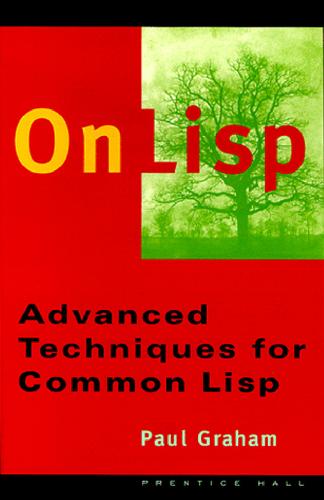
On Lisp: Advanced Techniques for Common Lisp
by
Paul Graham
Published 8 Sep 1993
This book was typeset using LaTeX, a language written by Leslie Lamport atop Donald Knuth's TeX, with additional macros by L. A. Carr, Van Jacobson, and Guy Steele. The diagrams were done with Idraw, by John Vlissides and Scott Stanton. The whole was previewed with Ghostview, by Tim Theisen, which is built on Ghostscript, by L. Peter Deutsch. Gary Bisbee of Chiron Inc. produced the camera-ready copy. I owe thanks to many others, including Paul Becker, Phil Chapnick, Alice Hartley, Glenn Holloway, Meichun Hsu, Krzysztof Lenk, Arman Maghbouleh, Howard Mullings, NancyParmet, Robert Penny, Gary Sabot, Patrick Slaney, Steve Strassman, Dave Watkins, the Weickers, and Bill Woods.
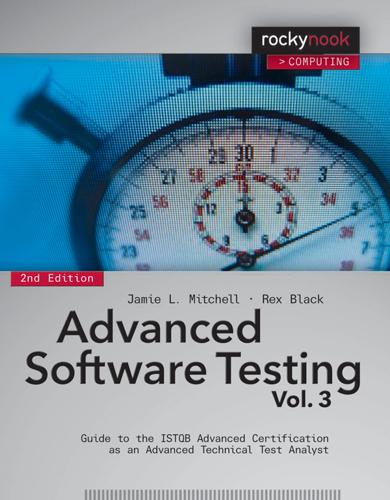
Advanced Software Testing—Vol. 3, 2nd Edition
by
Jamie L. Mitchell
and
Rex Black
Published 15 Feb 2015
Specific questions and considerations are associated with each of these attributes, and the online resource helpfully provides metrics for each.7 5.2.2 Deutsch’s Design Review Checklist Let’s look at an example of a checklist we can use to review distributed applications. The checklist comes from some work done by L. Peter Deutsch and others at Sun Microsystems in the 1990s. You might remember Sun’s early slogan: “The network is the computer.” Sun was in the forefront of distributed application design and development. Deutsch and his colleagues recognized that people designing and developing distributed applications kept making the same mistakes over and over again.
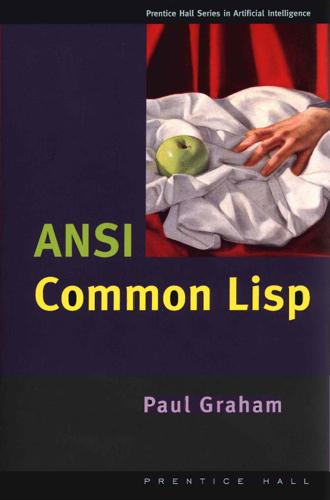
ANSI Common LISP
by
Paul Graham
Published 12 Nov 1995
This book was typeset using L^TgX, a language written by Leslie Lamport atop Donald Knuth's Tj3C, with additional macros by L. A. Carr, Van Jacobson, and Guy Steele. The diagrams were done with Idraw, by John Vlissides and Scott Stanton. The whole was previewed with Ghostview, by Tim Theisen, which is built on Ghostscript, by L. Peter Deutsch. I owe thanks to many others, including Henry Baker, Kim Barrett, Ingrid Bassett, Trevor Blackwell, Paul Becker, Gary Bisbee, Frank Deutschmann, Frances Dickey, Rich and Scott Draves, Bill Dubuque, Dan Friedman, Jenny X PREFACE Graham, Alice Hartley, David Hendler, Mike Hewett, Glenn Holloway, Brad Karp, Sonya Keene, Ross Knights, Mutsumi Komuro, Steffi Kutzia, David Kuznick, Madi Lord, Julie Mallozzi, Paul McNamee, Dave Moon, Howard Mullings, Mark Nitzberg, Nancy Parmet and her family, Robert Penny, Mike Plusch, Cheryl Sacks, Hazem Sayed, Shannon Spires, Lou Steinberg, Paul Stoddard, John Stone, Guy Steele, Steve Strassmann, Jim Veitch, Dave Watkins, Idelle and Julian Weber, the Weickers, Dave Yost, and Alan Yuille.
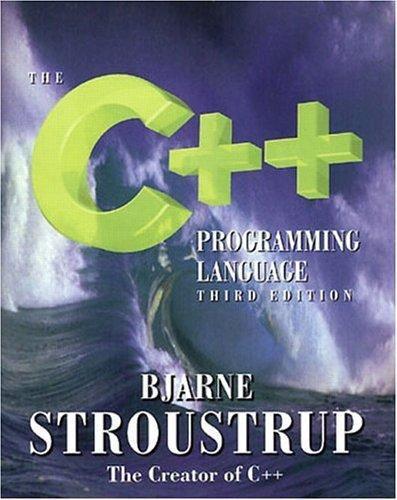
The C++ Programming Language
by
Bjarne Stroustrup
Published 2 Jan 1986
. ________________________________________ ________________________________________________________________________________________________________________________________________________________________ 7 ________________________________________ ________________________________________________________________________________________________________________________________________________________________ Functions To iterate is human, to recurse divine. – L. Peter Deutsch Function declarations and definitions — argument passing — return values — function overloading — ambiguity resolution — default arguments — ssttddaarrggss — pointers to functions — macros — advice — exercises. 7.1 Function Declarations [fct.dcl] The typical way of getting something done in a C++ program is to call a function to do it.